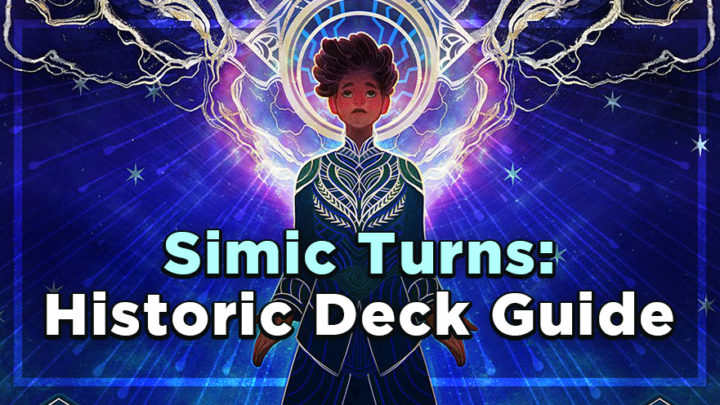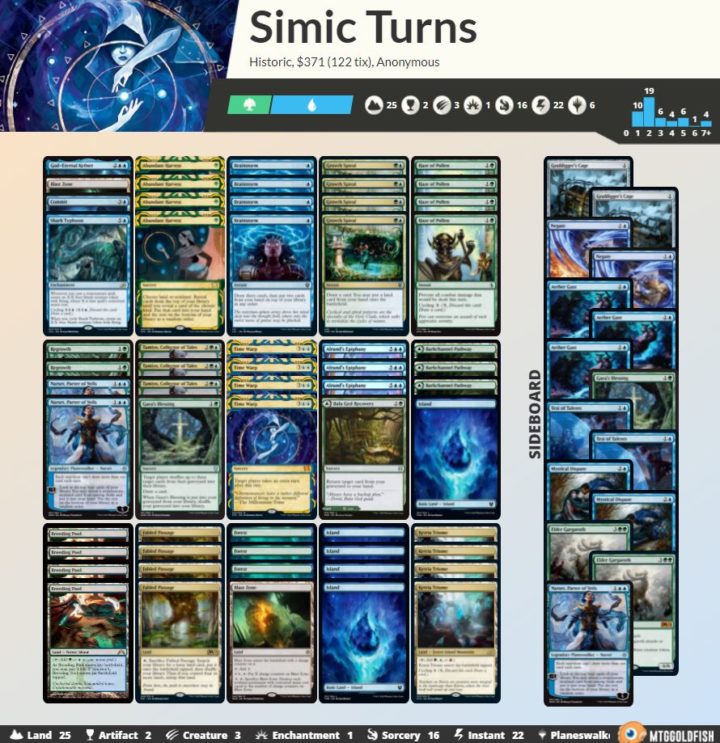Historic has been fun and exciting since the release of Strixhaven, with everyone trying out new cards and archetypes. I’ve played a handful of new decks with some of the powerful new cards from Mystical Archive, and my favorite by far is Simic Taking Turns. While I chose this deck because I have a lot of nostalgia for Nexus of Fate, it also performs very well in the current metagame. If you’re looking for a fun and competitive archetype to grind with in Historic, look no further — Simic Turns is for you.
The Deck
Not to get too ahead of myself, but this deck is BROKEN. It has been a while since I’ve found a new Historic deck that will fundamentally change the format, but Simic Turns is here to stay — and my list is the best one out there. Don’t worry, I checked.
If you’ve never played a deck like this, I’ll go over some basics before diving into the gameplay later. Basically, you’re setting up to take as many consecutive turns as possible until you have a win condition in play (usually Shark Typhoon or God-Eternal Kefnet). Your early turns are focused on land drops and setting up; then, once you have access to five mana, you can start casting Time Warp. With Tamiyo, Collector of Tales, Regrowth, Bala Ged Recovery, Gaea’s Blessing, and even Commit//Memory, you should be able to take enough turns to win.
I’ll go into card selection in the next section, but first, I want to point out some big differences between my list and others’. The biggest point of departure is that I’ve cut Nissa, Who Shakes the World from the deck. While Nissa is a great way to double mana while also threatening life totals, I don’t like the idea of adding another five-mana card to the list. Essentially, I wanted to streamline the list as much as possible for consistency, in line with old versions of Simic Nexus. This means most of the deck is setting up to take “infinite” turns, with fewer true win conditions. Fewer win conditions mean more cards to streamline your deck, and the deck is consistent enough that it doesn’t need many win conditions, anyway.
Card Choices
I’ve spent a lot of time around Simic Turns decks — first with Nexus of Fate, then with Alrund’s Epiphany and Discontinuity, now with Time Warp. This time around, I wanted to test my deck building skills by building the deck from scratch based on my previous knowledge. You can find an early version of my decklist here, and I’ve put a lot of additional work into the list since then. Here are some of the new cards I’ve added to the list.
God-Eternal Kefnet
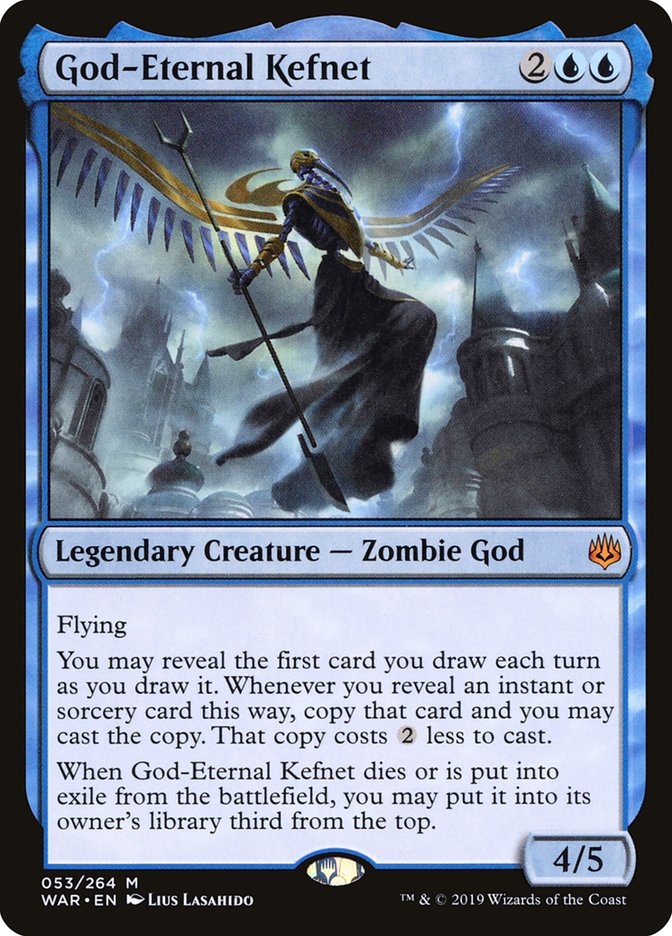
Kefnet was always one of my favorite cards in Nexus of Fate decks, but it was never a popular choice. However, I really like Kefnet as a one-of in this version of Simic Turns. It’s a hard-to-deal-with threat that allows you to cast cheap copies of your Time Warps or any other spell you reveal. Doubling the amount of turns you can potentially take is a significant upgrade to this deck — because Nexus of Fate isn’t legal in Historic, it’s hard to set up loops that allow you to take infinite turns. This is also why I’ve opted for two win conditions in this list instead of only one, like many Simic Nexus lists in the past.
Even if Kefnet doesn’t hit Time Warp, you still have many other spells that work well with Kefnet, like Brainstorm. You can Brainstorm with Kefnet’s ability on the stack to choose which spell you’d to copy. Otherwise, if you reveal Brainstorm, you just get an extra copy of Brainstorm to set up for a future turn. This deck has several other powerful spells you can pair with Kefnet — Abundant Harvest, Regrowth, and Commit//Memory, just to name a few.
Abundant Harvest
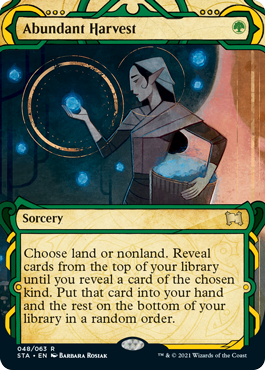
Abundant Harvest is a new card coming in Modern Horizons 2 which was included in Mystical Archive. This spell has been heavily overlooked in Historic and is much more powerful than you’d think. In the early game, Abundant Harvest can help you hit your land drops on time; in the mid-to-late game, you have access to any powerful spell in your deck — an extra turn spell, a Haze of Pollen, a draw spell, or one of your powerful planeswalkers. Abundant Harvest’s low mana value makes this modal spell powerful no matter what stage of the game you’re in.
Blast Zone

While it’s not quite the same without Wilderness Reclamation, Blast Zone is still great in this deck. Simic Turns has typically struggled against aggressive strategies, hence the inclusion of Haze of Pollen. However, sometimes the four copies of Haze of Pollen aren’t enough, and you need to remove a board full of one-mana creatures. In comes Blast Zone to save the day and buy you enough time to start taking “infinite” turns.
Gaea’s Blessing

Not gonna lie — I’m pretty proud of myself for thinking to add this card to the deck. Gaea’s Blessing fits perfectly into this archetype because it can shuffle up to three Time Warps in your graveyard back into your deck. Additionally, with Dimir Rogues starting to take over Historic, having a way to shuffle your graveyard back into your deck when you’re getting milled is one of the best feelings in the world. (Plus, they don’t have a way to answer the Gaea’s Blessing trigger.) If you end up drawing Gaea’s Blessing instead of milling it, you can always cast Brainstorm to put it back on top of your library in response to a mill effect from your opponent. I love this inclusion so much that I added a second copy to the sideboard, specifically for the Rogues match-up.
Gameplay
Now time for the nitty-gritty: How do you actually play this deck? Your matches only look slightly different based on what your opponent is playing, so I’ll start by breaking down the gameplay into the different stages of a game.
Early Game

In the early game, your plan is all about setup and not dying to aggro. This is where you would cast Abundant Harvest for lands if you need them, Growth Spiral to ramp, and Narset, Parter of Veils to set up your late game while shutting off your opponent’s card draw. If you’re playing against an aggressive deck, you might be casting a handful of copies of Haze of Pollen and using Regrowth to bring Haze of Pollen back to your hand to replay later. The early game typically ends on turn four, where you can cast Kefnet or even Tamiyo, Collector of Tales, if you think you’ll get to untap with her.
Mid Game
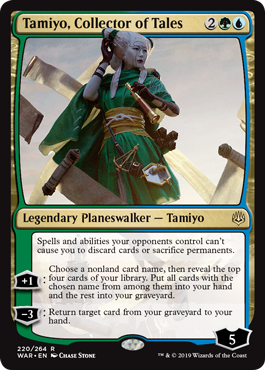
The mid game is where all the action is. At this point, you’re typically starting to take extra turns, hoping to string together as many as possible. One thing to keep in mind: in the late game, you can almost assuredly take as many turns as you want, uncontested with counterspells; in the mid game, you might run into some situations where you take 2-3 turns and just pass back to your opponent. That’s okay! You can try to string together all your turns here, but you likely need a little more setup time before you feel comfortable going off.
So, what does mid game setup look like? If you played Tamiyo on turn three or four, your next two turns could look like this: Cast Time Warp, then -3 Tamiyo to rebuy Time Warp from your graveyard; next turn, cast Time Warp, then +1 Tamiyo naming Time Warp.
Ideally, during these turns, you’re making land drops and grabbing some supporting spells — like Regrowth to buy back Time Warp or Abundant Harvest to find additional spells. As long as you’re advancing your progress during these turns, you’re in a good position. If you’re only casting Time Warp without making more land drops, drawing cards, or advancing the board, you might not be well-positioned to finish off the opponent in the late game.
Late Game
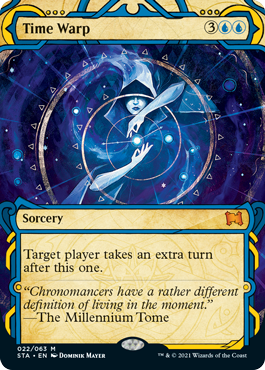
This is where it all comes together. You have enough mana to cast multiple spells each turn, or you have a threat in play and you’re ready to start taking the rest of the turns in the game. This part of the game is typically when you can hardcast Shark Typhoon and Time Warp in the same turn, or cast Time Warp and buy it back from your graveyard and cast it again in one turn. This allows you to spend time casting spells in addition to Time Warp or Alrund’s Epiphany.
My personal favorite play here is casting Memory from the graveyard with Narset in play to refuel your hand without letting the opponent draw more than one card. If you have your choice of cards to play, Memory is usually the one you want to cast last to ensure you’ve taken as many turns as possible before you shuffle up and start again. Between Regrowth, Tamiyo, Gaea’s Blessing, and Commit//Memory, you should have enough turns to win the game before the opponent gets to untap.
Sideboard Guide
On to what everyone is most interested in: The Sideboard Guide.
I have a lot to say about this deck and its place in the meta, so you’ll have to buckle in for some more information about match-ups as well.
Mono-Red Aggro/Gruul Aggro
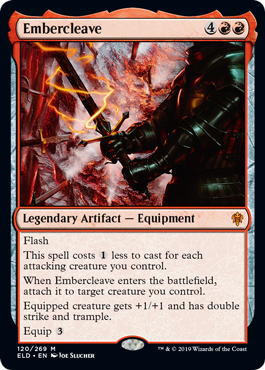
Aggressive decks are the hardest for Simic Turns to combat because of how much setup our game plan requires, and the deck doesn’t interact much. In pre-board games, you’ll need to rely on Haze of Pollen and hope you can survive until the mid game to start taking extra turns. In the post-board games, you thankfully have access to more interaction and lifegain effects. These will ideally help keep you alive long enough to take a handful of turns with an Elder Gargaroth in play! I often like to take out spells that cost too much mana or that aren’t interactive, such as Alrund’s Epiphany.
In: +3 Aether Gust, +2 Elder Gargaroth, +2 Negate (Mono-Red/Boros Burn only)
Out: -2 Alrund’s Epiphany, -2 Narset, -1 Shark Typhoon, -1 Commit//Memory and -1 Tamiyo (Mono-Red/Boros Burn only)
Jund Sacrifice/Rakdos Sacrifice
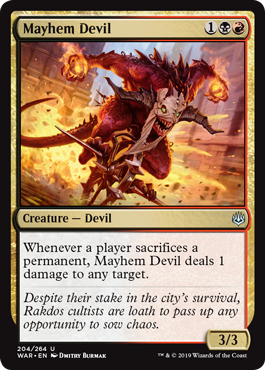
The Sacrifice match-ups can be difficult if your opponent can put enough pressure on you in the early game. But unlike the aggro deck match-ups, we have a lot of things going for us here. First, Tamiyo helps against any hand hate and Priest of Forgotten Gods. Second, Claim the Firstborn is mostly a dead card against us in Game 1. If your opponent isn’t prepared to adjust to an aggressive strategy quickly, you can end up winning the pre-board games.
Post-board we have a lot of very good cards for this match-up like Aether Gust, Elder Gargaroth, and Grafdigger’s Cage. Since we’re siding in Gradigger’s Cage, I would side out Commit//Memory and some higher mana value cards. You can also use Gaea’s Blessing here to shuffle your opponent’s cards from the graveyard into their library if they have Woe Strider or Cauldron Familiar in there.
In: +2 Elder Gargaroth, +3 Aether Gust, +2 Grafdigger’s Cage
Out: -1 Commit//Memory, -1 Narset, -2 Alrund’s Epiphany, -2 Haze of Pollen, -1 Brainstorm
Dimir Rogues
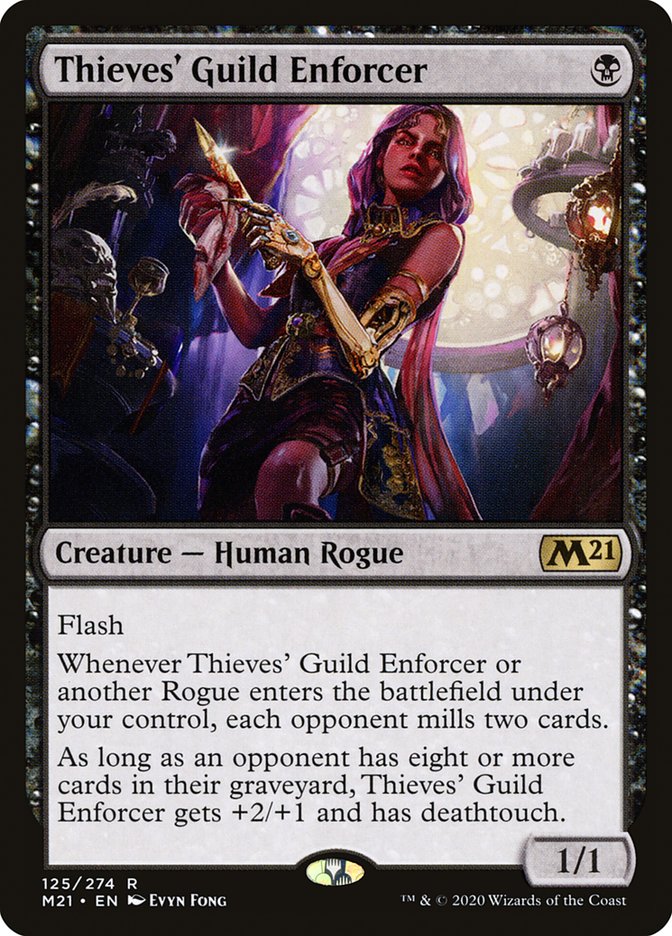
This can be a difficult match-up in the pre-board matches because of how interactive Rogues can be (and how uninteractive our deck is). Dimir Rogues’ game plan has three components — mill, control, and attackers — and unfortunately, it’s hard to deal with all three at once. Haze of Pollen can help keep the pressure off and Gaea’s Blessing reduces the effects of mill, but we don’t have a way to combat counterspells. Again, Tamiyo helps against hand hate, but getting your spells to resolve might be tough.
Luckily, we have some sideboard cards to help us out! Gaea’s Blessing and Mystical Dispute are my favorites here, and I would consider taking out spells that are harder to cast. Trimming Haze of Pollen is another consideration, as Rogues isn’t a traditional aggressive deck.
In: +2 Mystical Dispute, +2 Test of Talents, +1 Gaea’s Blessing, +1 Elder Gargaroth
Out: -2 Haze of Pollen, -1 Alrund’s Epiphany, -1 God-Eternal Kefnet, -1 Tamiyo, -1 Regrowth
Izzet Phoenix

Izzet Phoenix is the hot new deck that everyone has been trying recently. In the pre-board games, both players are focused on their own game plan, and there is little interaction in this match-up. Post-board gets a little more intense with counterspells and interaction.
Overall, I like this match-up. Unless they get three Arclight Phoenixes in play on turn three, you usually have enough time to set up your combo. Grafdigger’s Cages are an easy include; after that, I would add another copy of Narset, some Mystical Disputes, and Elder Gargaroth. They likely will bring in Narset against you as well, so this is the one time I’d advocate cutting Brainstorm.
In: +1 Narset, +2 Elder Gargaroth, +2 Grafdigger’s Cage, +2 Mystical Dispute
Out: -4 Brainstorm, -1 Alrund’s Epiphany, -1 Haze of Pollen, -1 Gaea’s Blessing
Orzhov Auras
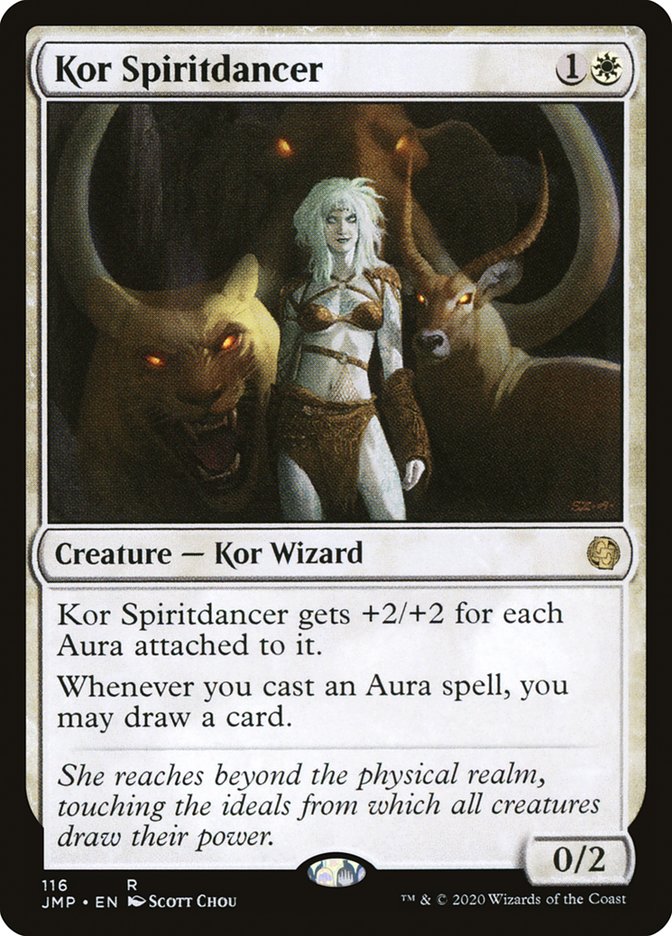
While Orzhov Auras wins the game through combat damage, they often take a while to deal huge chunks of damage, giving you enough time to set up your combo and win the game. This also means you get to hold onto your Haze of Pollens longer than you would against Mono-Red or Gruul. Auras doesn’t have many great cards against you other than Thoughtseize, so I don’t think you need much in this match-up. I’d only side in Narset and Elder Gargaroth and cut a few slower cards.
In: +1 Narset, +2 Elder Gargaroth
Out: -1 Kefnet, -1 Gaea’s Blessing, -1 Abundant Harvest
Azorius Control/Dimir Control
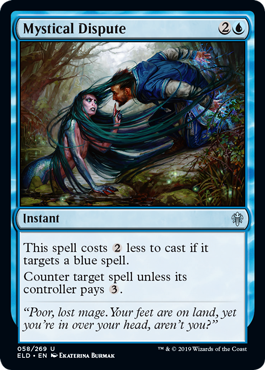
Azorius Control used to be a poor match-up for Simic Nexus back in the day because of Teferi, Time Raveler. Lucky for us, he’s banned in Historic, and we can get control decks to quickly run out of counterspells by casting multiple spells in one turn. Pre-board games might be difficult with all the counterspells, but remember that both Azorius Control and Dimir Control have many dead cards against you (board wipes and spot removal). Plus, you’ll very favored in the post-board games if you side in counterspells and an additional copy of Narset.
In: +2 Test of Talents, +2 Mystical Dispute, +2 Negate, +1 Narset
Out: -4 Haze of Pollen, -1 Alrund’s Epiphany, -1 Regrowth, -1 Gaea’s Blessing
Sultai Ultimatum
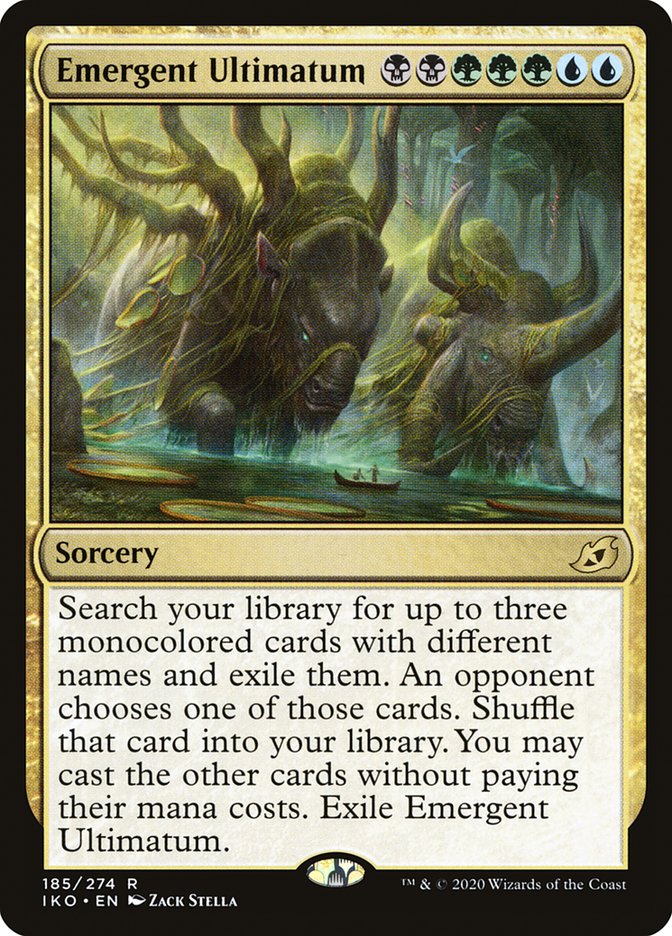
In the pre-board games, you’re just trying to combo before your opponent can cast Emergent Ultimatum. The post-board games are much more interactive, and you happen to have the best counterspell of them all! Test of Talents has overperformed every time I’ve cast it; I almost want to add more to my sideboard if I expect to face this deck, control decks, or the mirror. Against Sultai Ultimatum and any other combo deck, I likely just want counterspells in the post-board games, specifically for the Ultimatum.
In: +2 Test of Talents, +2 Negate, +2 Mystical Dispute, +1 Narset
Out: -1 Gaea’s Blessing, -4 Haze of Pollen, -1 Alrund’s Epiphany, -1 Brainstorm
The Mirror
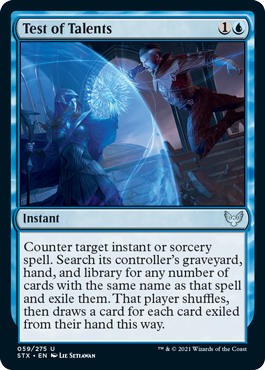
Because there isn’t much interaction in the pre-board games, the mirror is actually much different than Simic Nexus mirrors used to be — it’s largely another race to see who can combo first. In the post-board games, however, both players have access to a lot more counterspells. You really want to have some form of counterspell in hand at all times, and you don’t want to make the first move unless you think you have an opening to win. If you tap out too early, you give your opponent the opportunity to stop you from taking any more turns. Also, be wary of your opponent’s copies of Test of Talents! Siding out sorceries and Haze of Pollen are the first cuts I’d make here.
In: +3 Aether Gust, +2 Negate, +2 Test of Talents, +2 Mystical Dispute, +1 Narset
Out: -1 Gaea’s Blessing, -2 Alrund’s Epiphany, -4 Haze of Pollen, -2 Regrowth, -1 Tamiyo
Phew, I hope that was detailed enough! I’ve left out a handful of decks you might come across that are falling out of favor or that are less popular in tournament metagames than on ladder (like Goblins and Elves). However, you can use a lot of basics from this article to guide your sideboarding decisions no matter which deck you’re facing. Opt for Negate over Haze of Pollen against control and Elder Gargaroth over Alrund’s Epiphany against aggro, and you should be good.
***
And there you have it: everything I know about Simic Turns in Historic right now. I truly believe the changes I’ve made to the deck will push Simic Turns into the highest tiers in the Historic metagame. There will likely be more changes to make as the format solidifies, but for now, I’m happy with where the deck is.
Simic Turns might seem intimidating to play, but like most decks, it’s all about practice and repetition. When you get the hang of the deck, you’ll be taking hundreds of turns without even thinking about it! As a bonus, many opponents will concede to you without being dead because people HATE this kind of deck. So if you’re looking to grind the Arena ladder, this might be your best bet.
You can find me jamming Simic Nexus live on Twitch over at twitch.tv/meebo. Be sure to tune in and let me know how the deck feels to you!

Ally Warfield is a member of the Rivals League, a full-time streamer, and a Splinter Twin apologist. Her focus is in Historic and Standard, but she also loves to dabble in Vintage and Limited formats as well.

